January to February
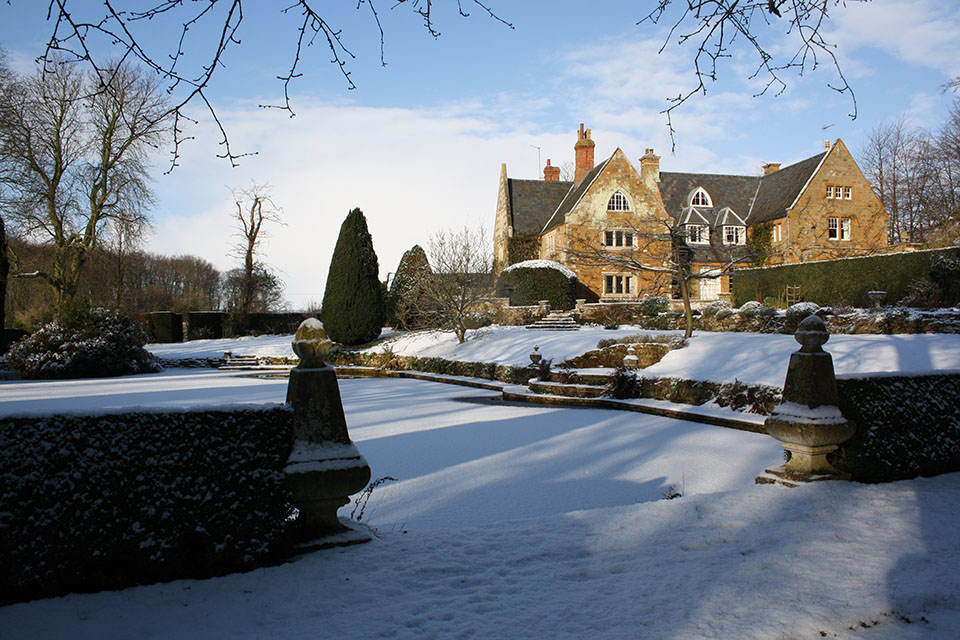
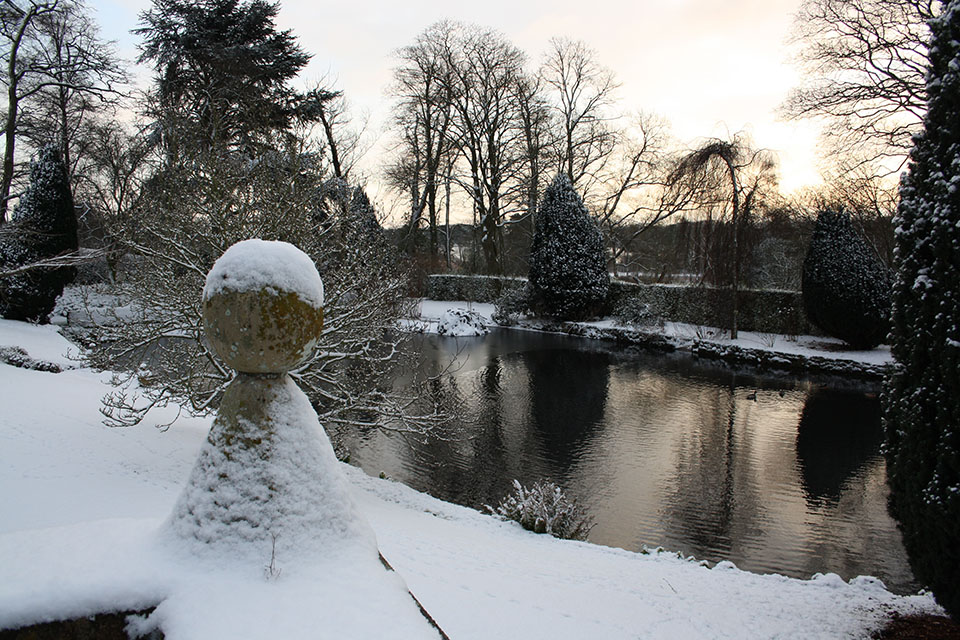

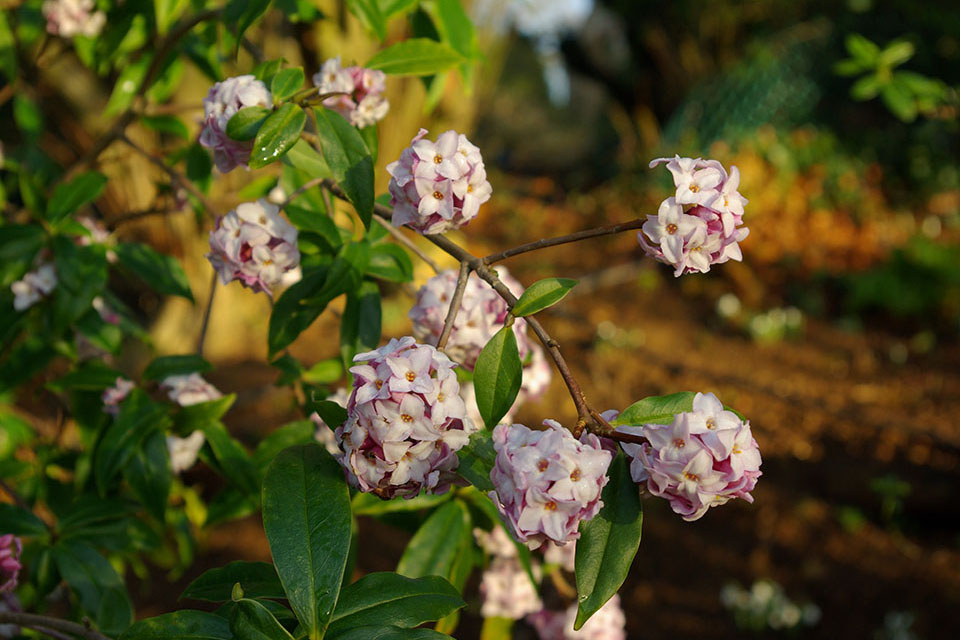
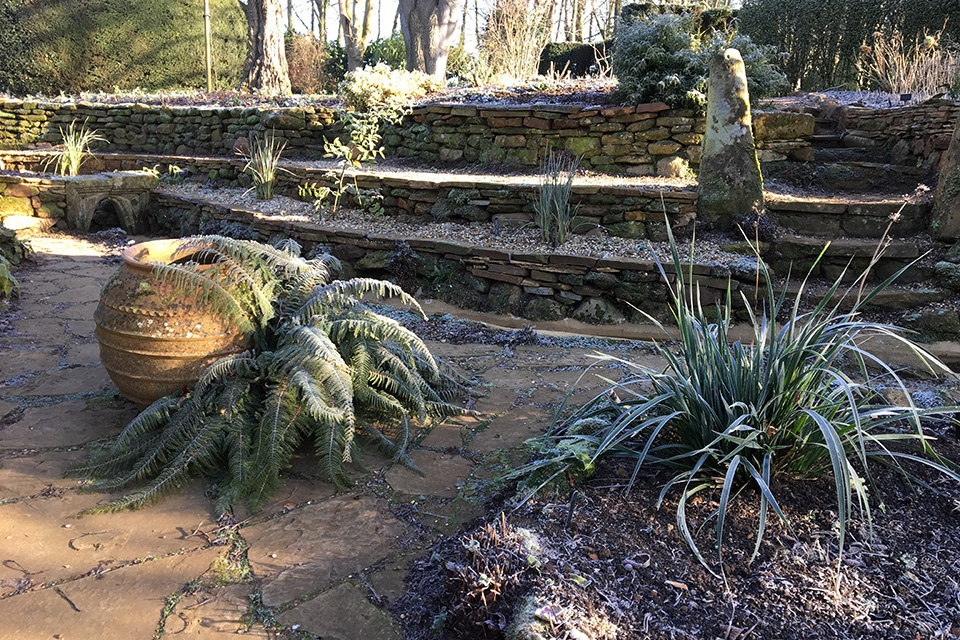
Once we are into January the prospect of things to come is signalled by a few flowering plants and shrubs – Daphne bholua ‘Jaqueline Postill’ with its glorious scent and pretty pink flowers, Sarcococcas with their even stronger scent, the yellow flowers of Hamamelis mollis, winter flowering Iris stylosa which produces endless deep blue flowers, and the gradual carpeting of Eranthis hyemalis (winter aconites).
The end of January usually heralds the start of the snowdrop season, coinciding with the flowering of hellebores and crocus. All these flowers stand up gallantly to snow and icy conditions which frequently occur at this time of year.
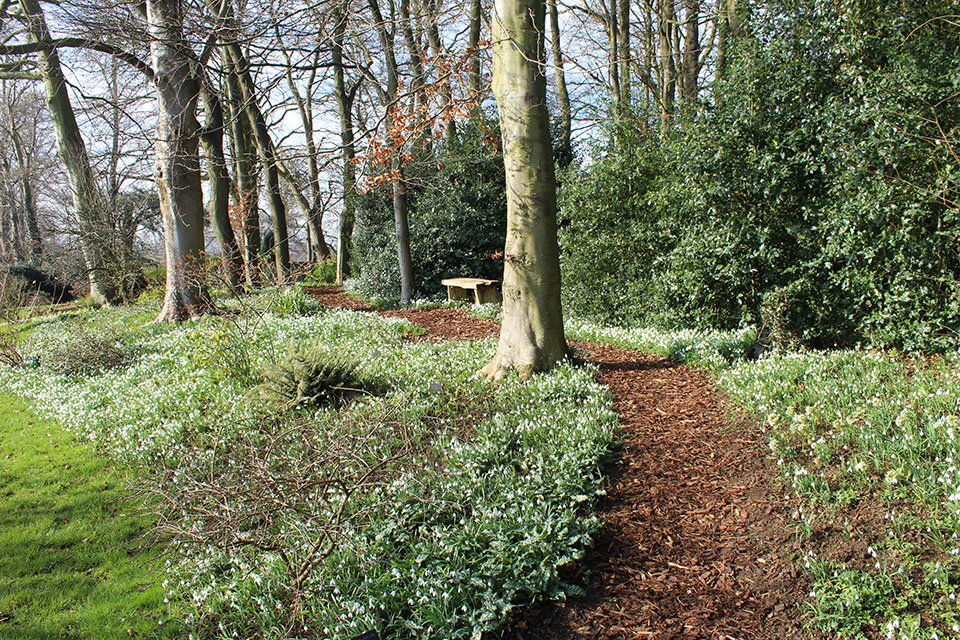
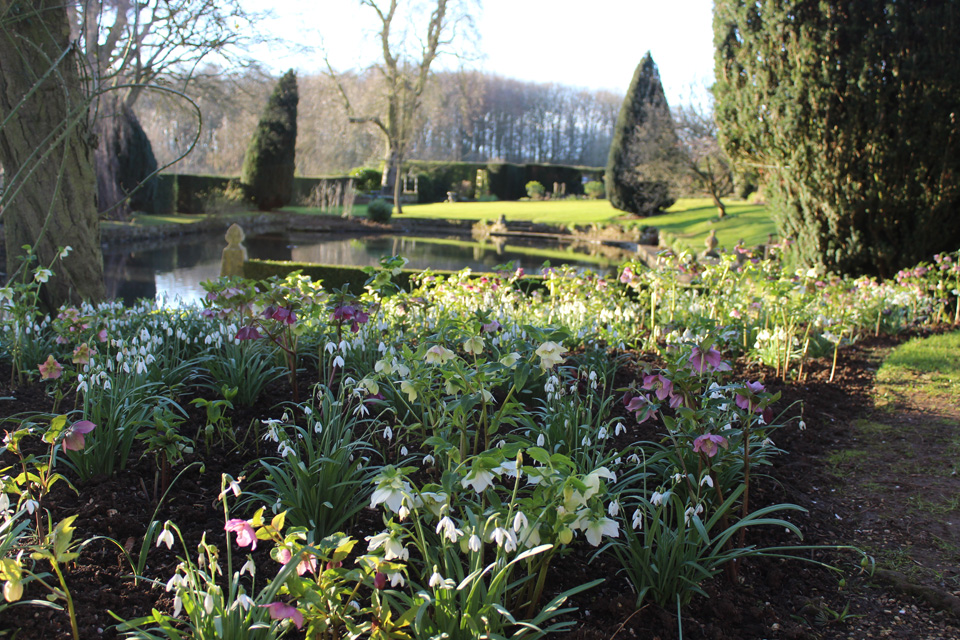
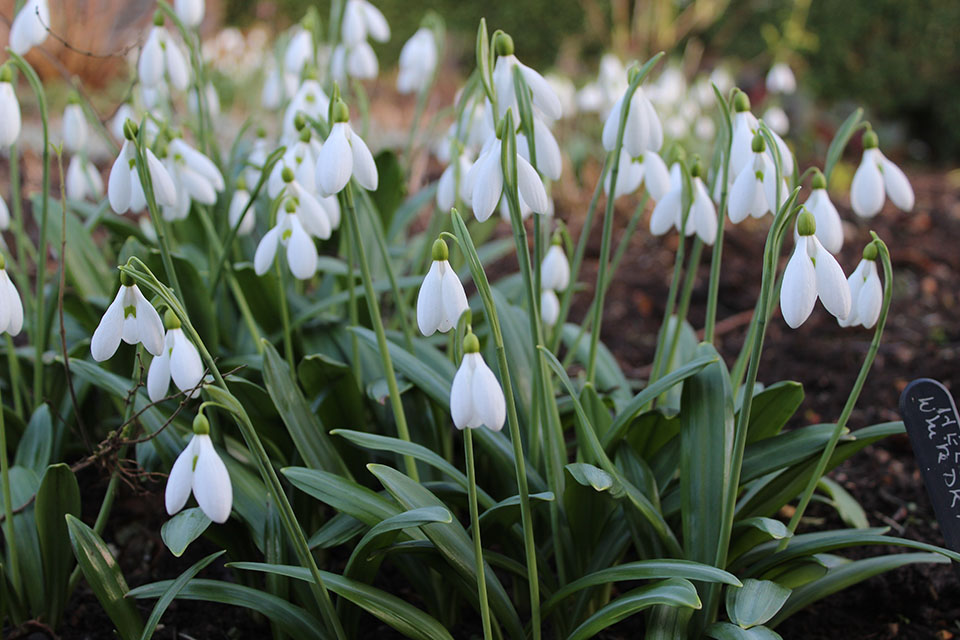
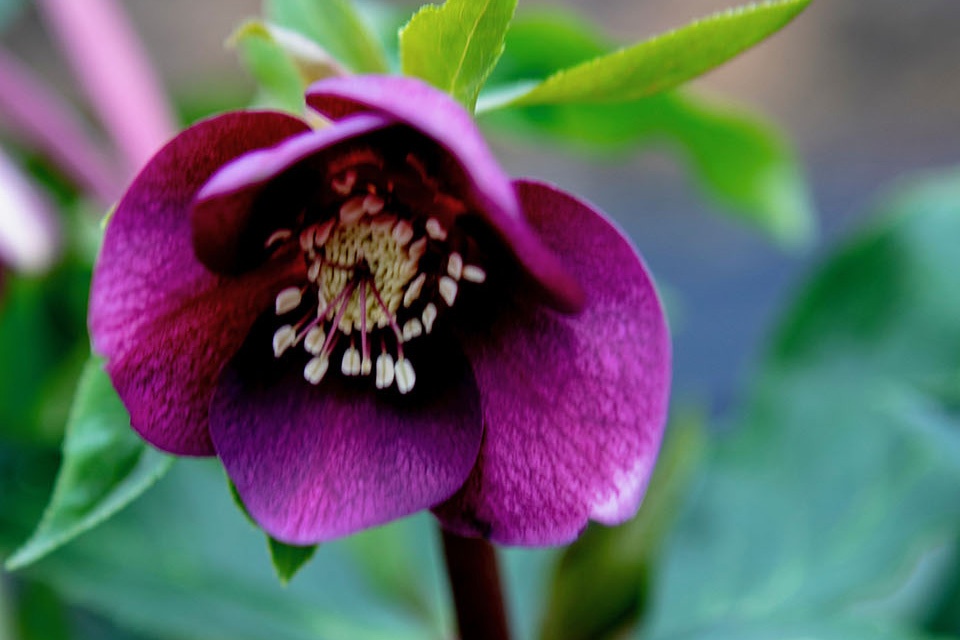
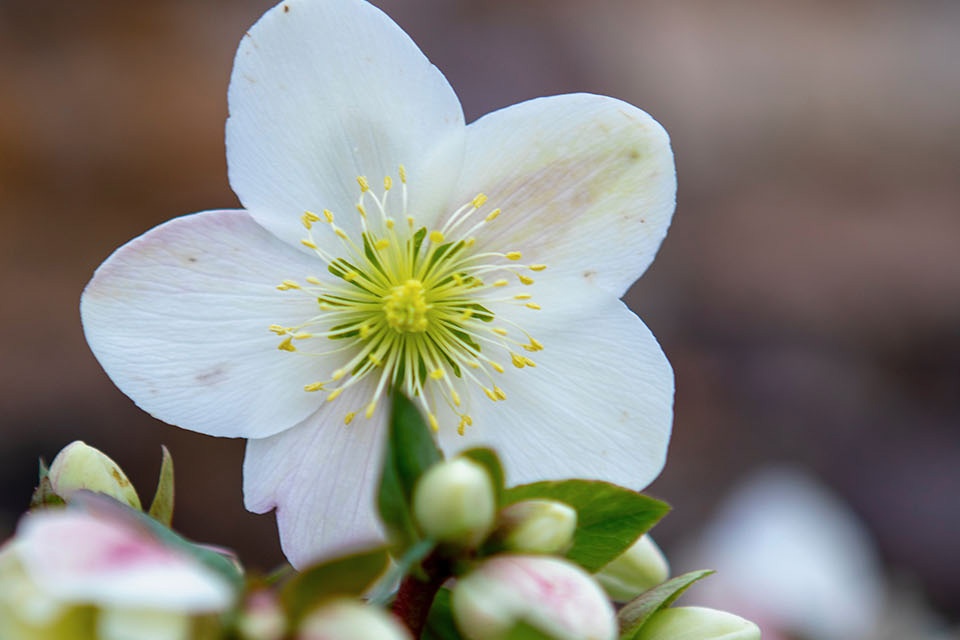
February to March
Depending on the mildness/severity of the winter weather, February should be the month for snowdrops to come out and be looking their best. If it has been mild, crocus and hellebores should also be putting on a good display. Daphne Bholua ‘Jaqueline Postill’ continues to flower, together with the later forms of mahonia, hamamelis, the sweetly scented sarcococcas and winter-flowering viburnums. At ground level there are early primulas and some primroses, Iris stylosa, Narcissus ‘Tete a Tete’ and chionodoxa. It’s a very exciting time as the garden begins to wake up and show signs of promising things to come.
Early March heralds the start of special woodland plants such as erythroniums, fritillaries and narcissus and so much more appearing every day.
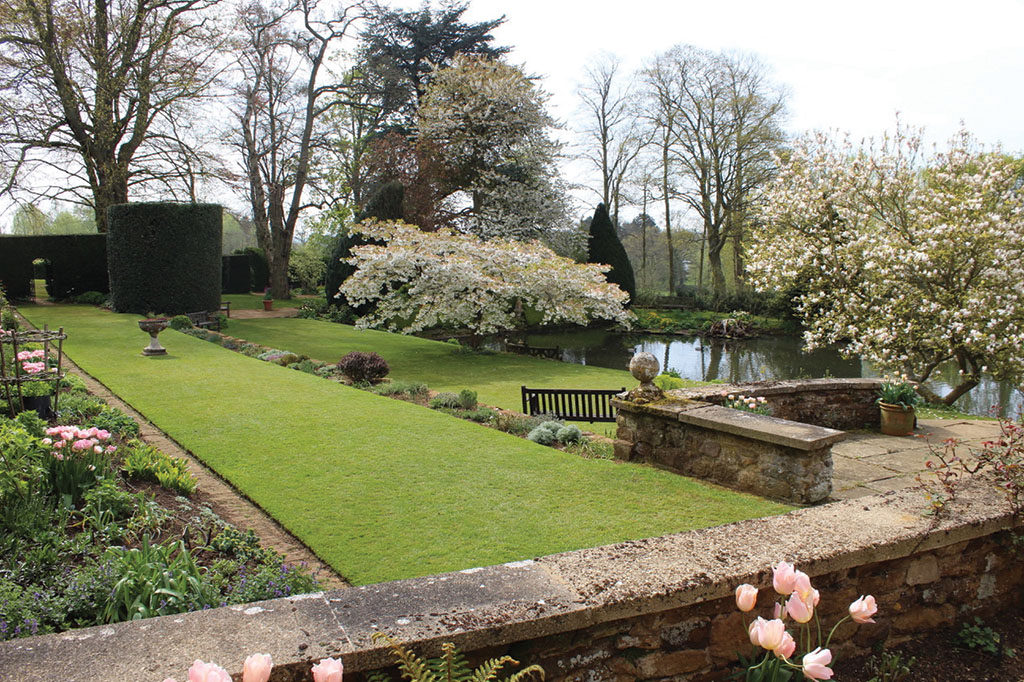
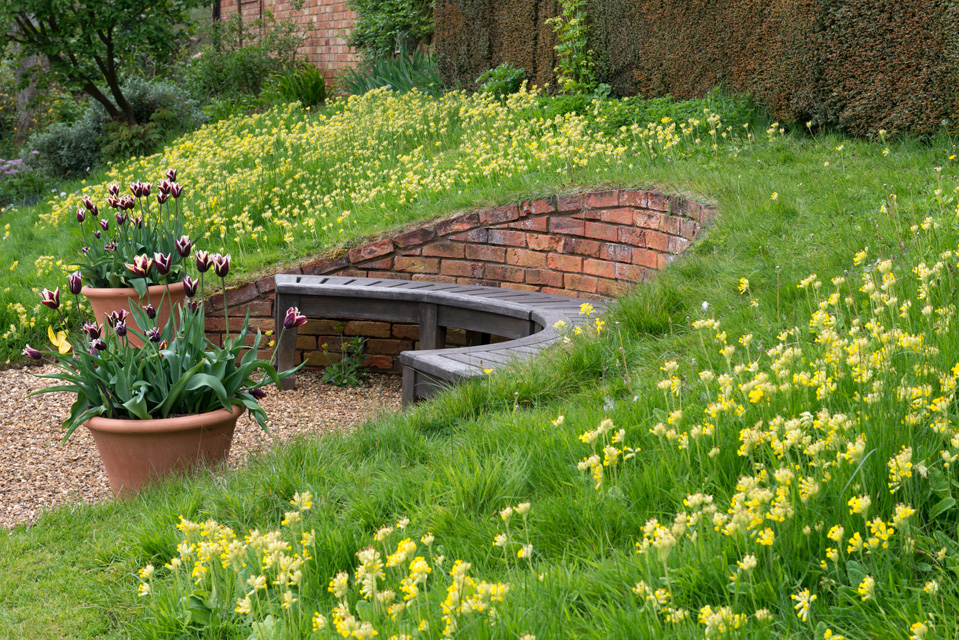

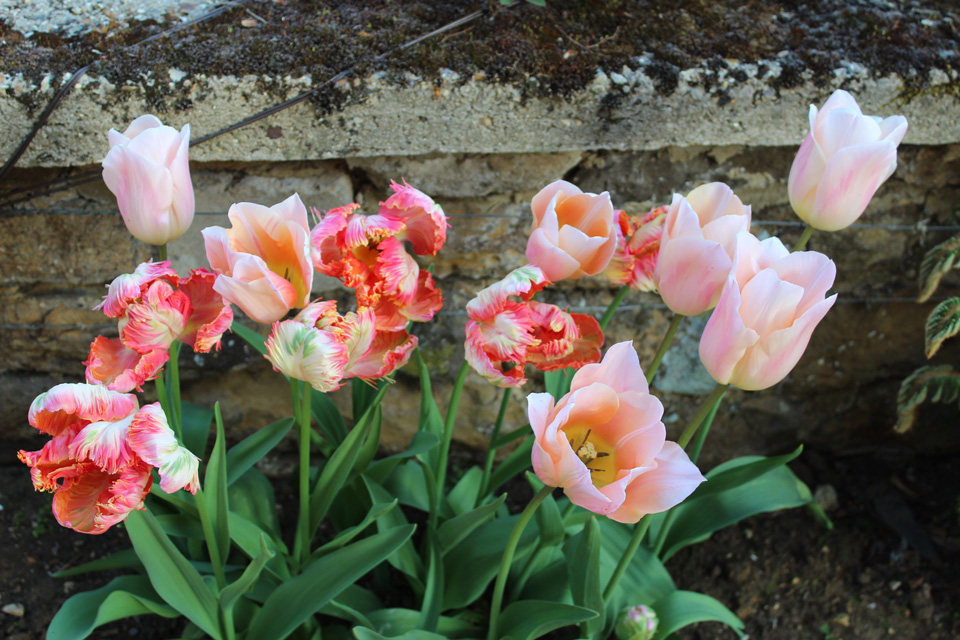
March to April
By March and April the garden is really waking up, particularly in shady areas. All the special woodlanders – trilliums, varieties of anemone nemerosa, erythroniums, fritillaries, narcissus, primulas, brunnera, pulmonarias, lathyrus and so many more will be flowering. In the Water Garden caltha and lysichiton compete with the strong yellows of forsythia and crown imperials. In sunnier parts of the garden the blossom of flowering cherries, magnolias and amelanchier make a wonderful show and it is the start of the tulip season.
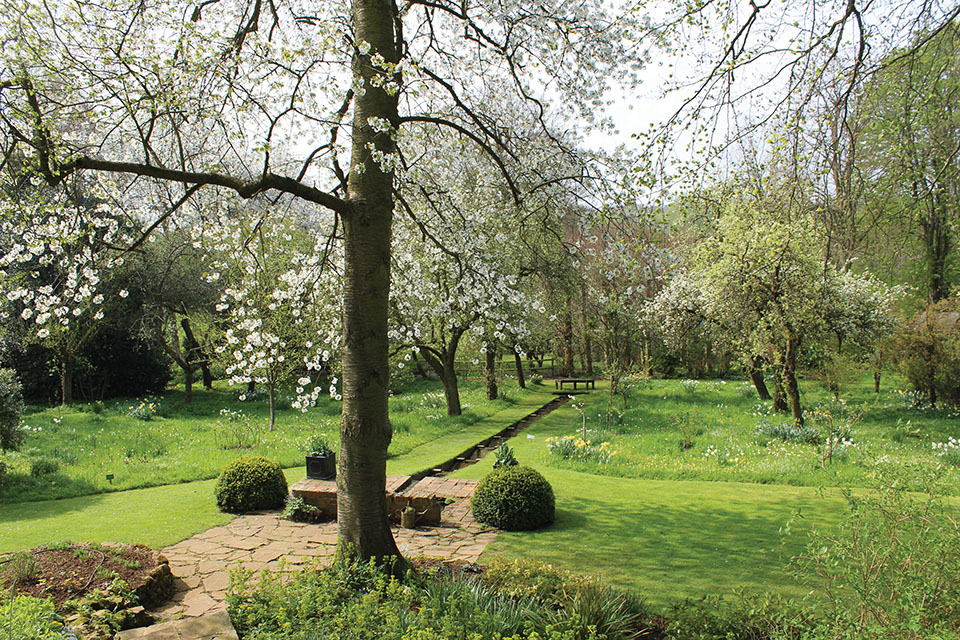
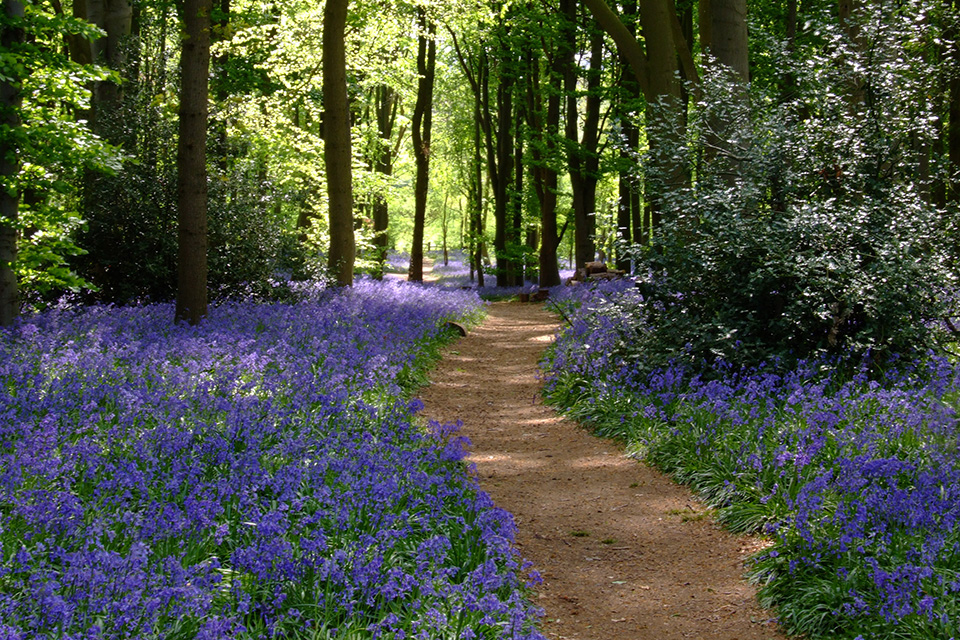

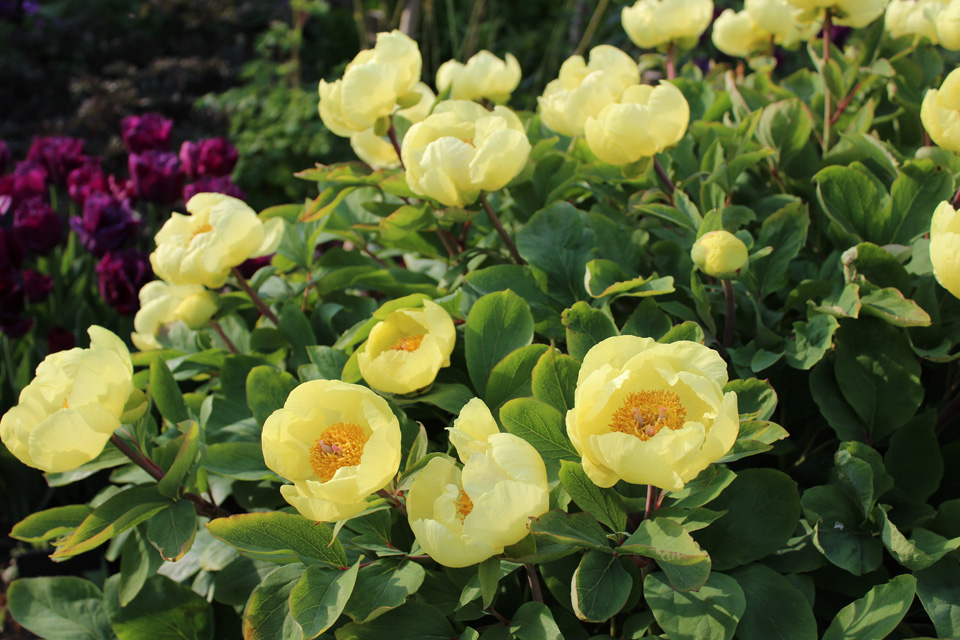
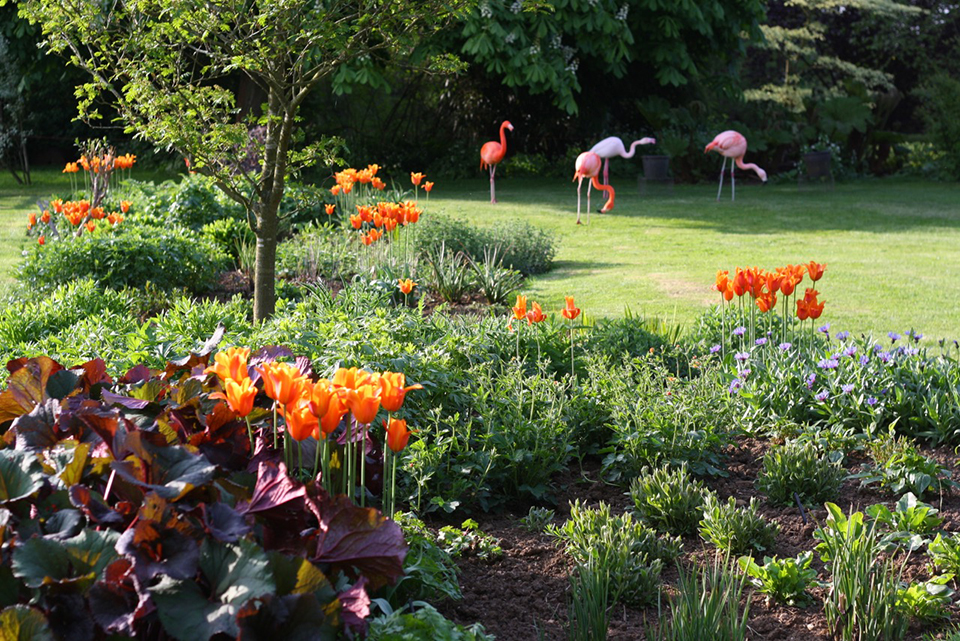
April to May
This is one of the busiest periods in the garden and all the different areas are bursting into life, particularly our Bluebell Wood, which is usually in full flower from about the last week of April until the middle of May. Elsewhere tulips are in full bloom, the Water Garden becomes increasingly colourful and species and tree paeonies reveal their exotic and ephemeral flowers. It’s difficult to enumerate all the different plants coming into flower at this stage and to some extent it is the glorious and varied fresh foliage which captures the eye, but the pictures here will hopefully give a sample of what it is like.
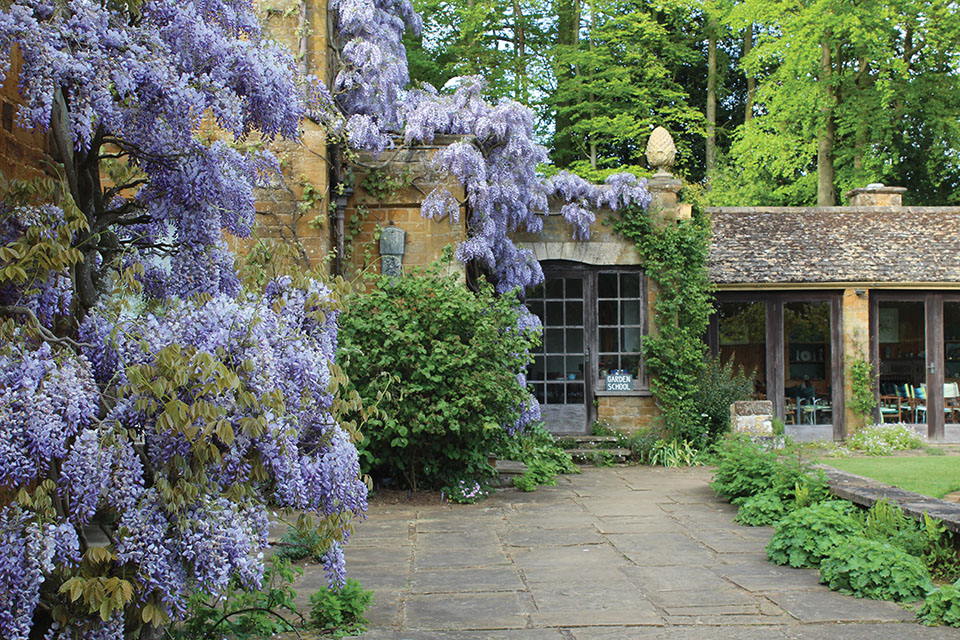
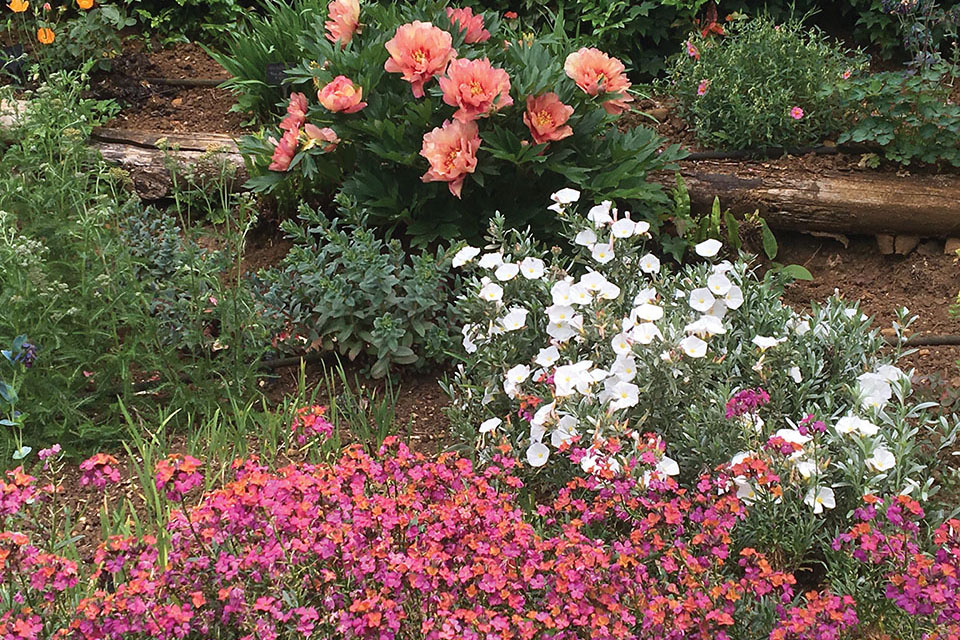
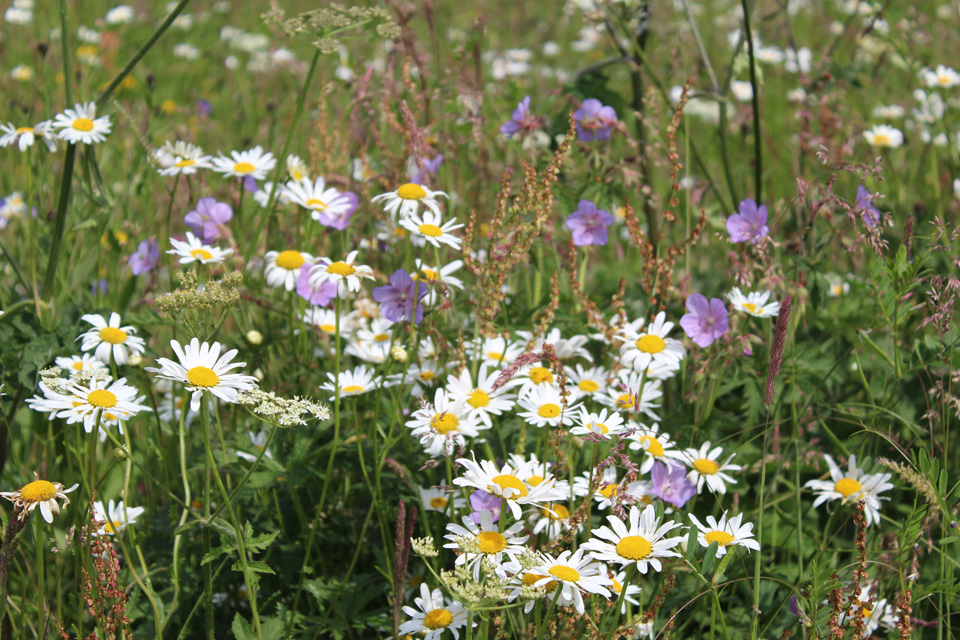
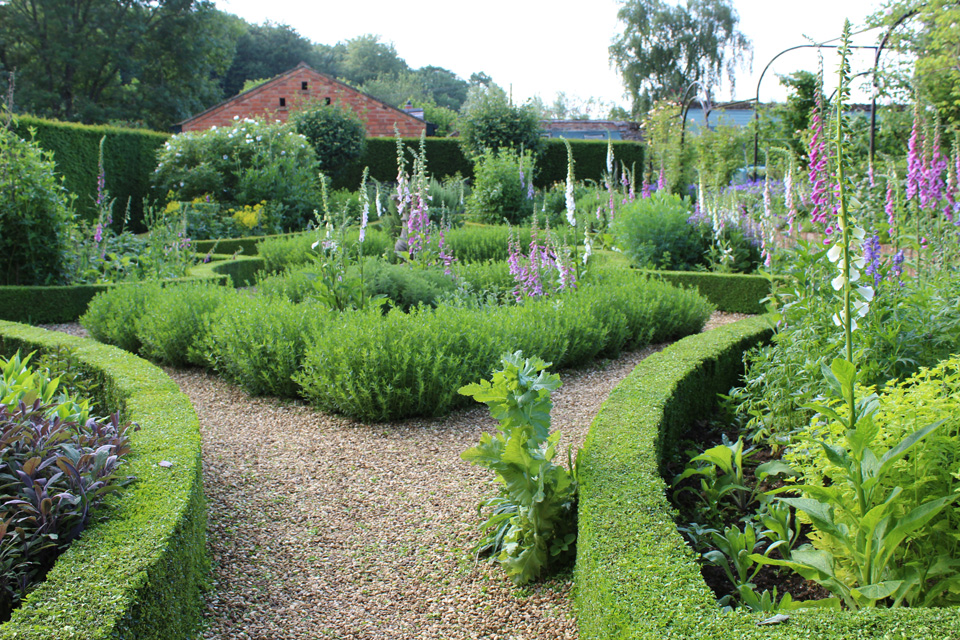
May to June
Late spring is that exciting period when the garden is about to burst into full colour and yet everything still has that wonderful freshness, especially the foliage. So the main players at this stage are irises, lupins, alliums, nepeta, euphorbias, paeonies, salvias, clematis and early roses. As the bluebells in the wood fade, the adjacent Wildflower Meadow starts to come into its own. In the garden the Water Garden is at its best and the borders begin to look abundant.
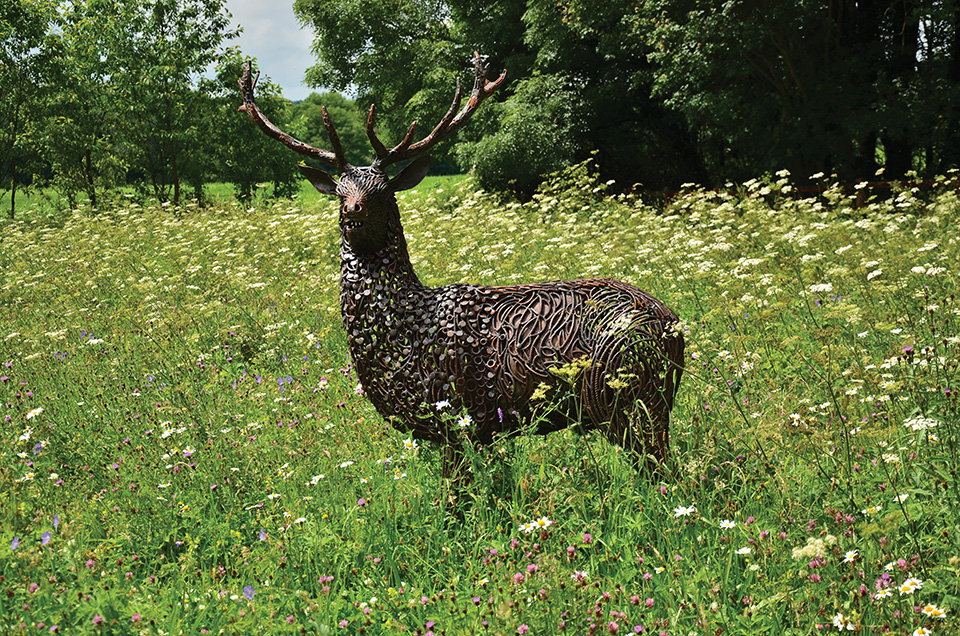
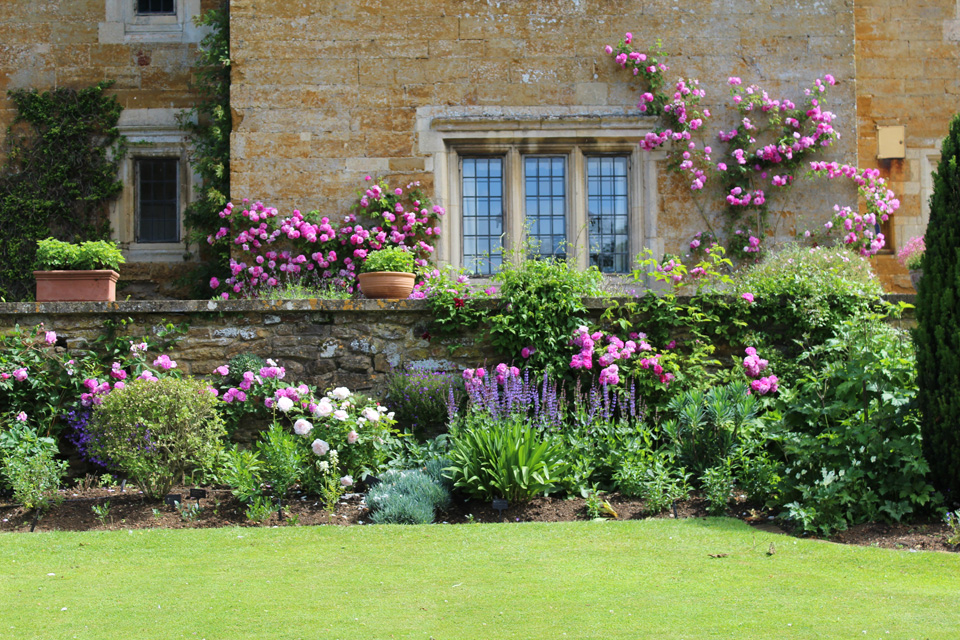
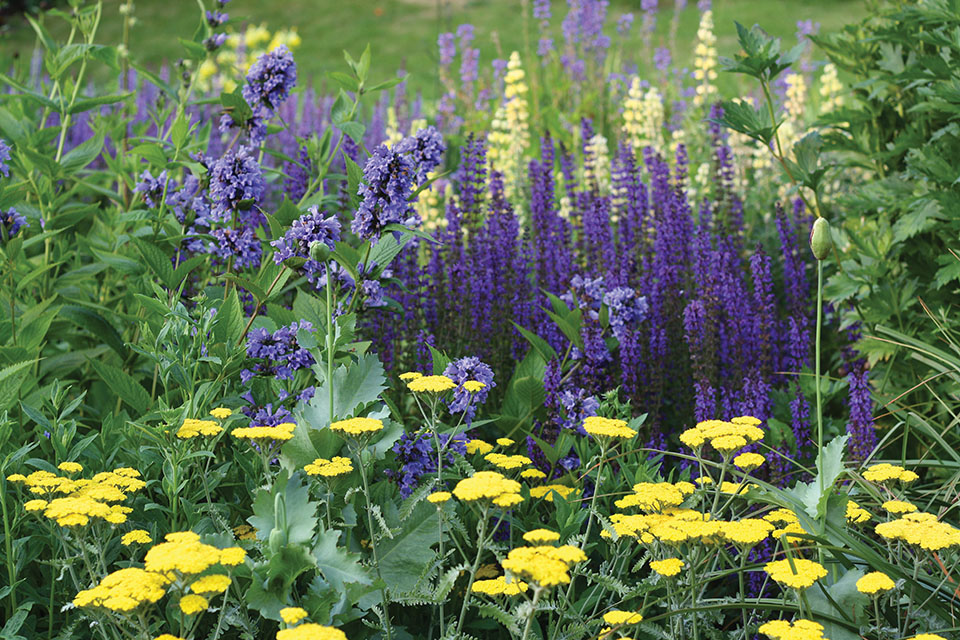
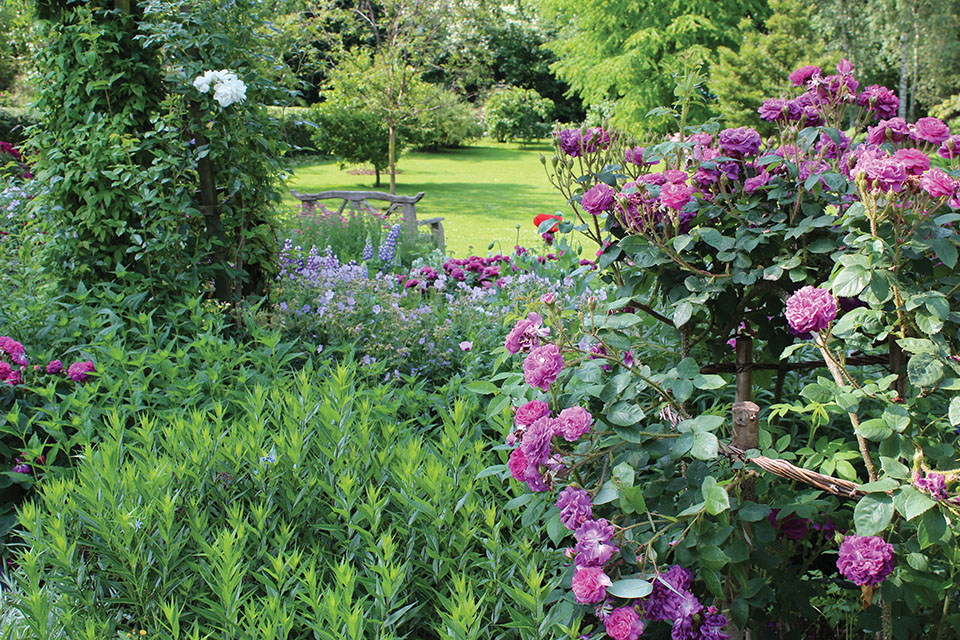
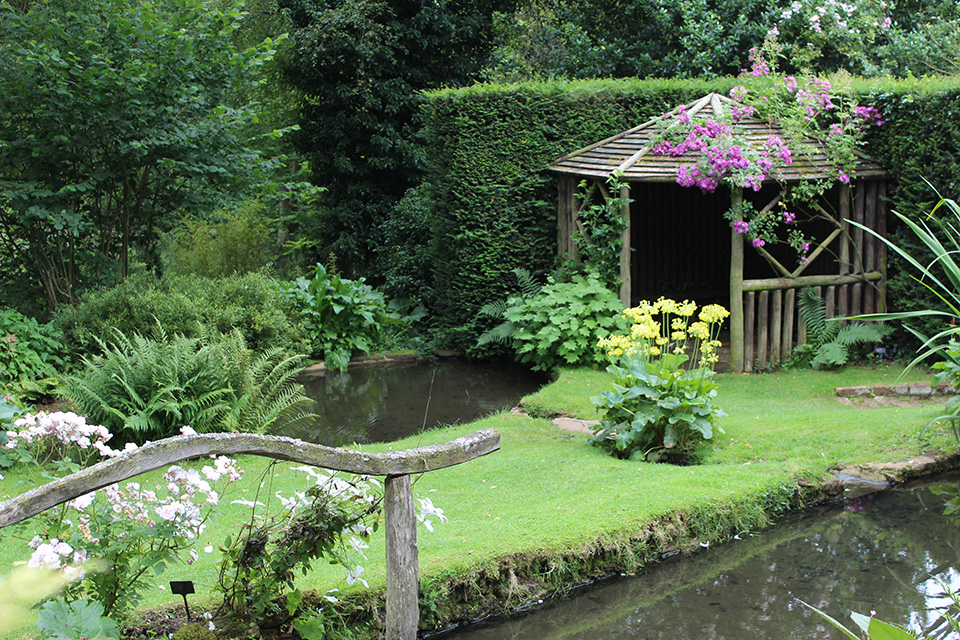
June to July
The light becomes stronger at this time of year and the colours likewise are more vibrant. There is so much to see – particularly roses and an increasing number of border plants – achilleas, aconitums, delphiniums, galega, herbaceous clematis, thalictrums, salvias, foxgloves and many more. We have roses everywhere – in borders, as specimen plantings, up and over walls, up trees and, of course in the Rose Garden, the Rose Bank and the Rose Walk. For those seeking shade on hot days, there are seats from where the quieter and calmer parts of the garden can also be enjoyed.
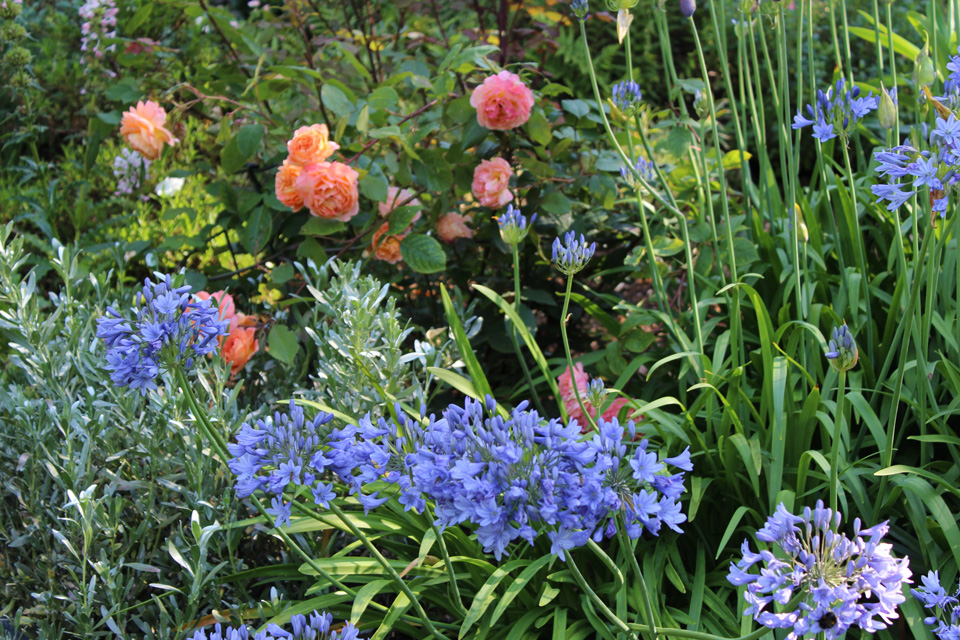
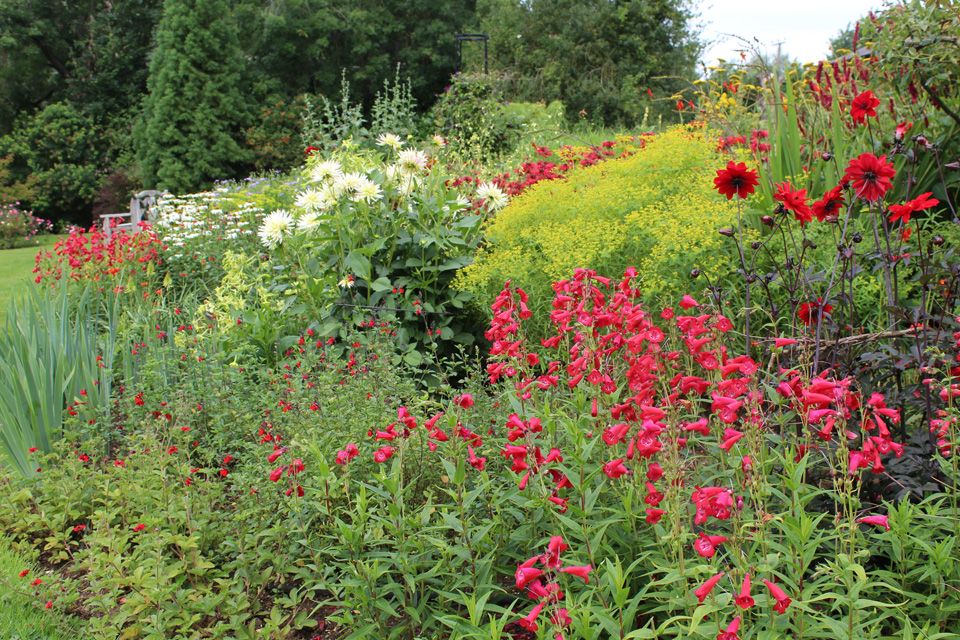
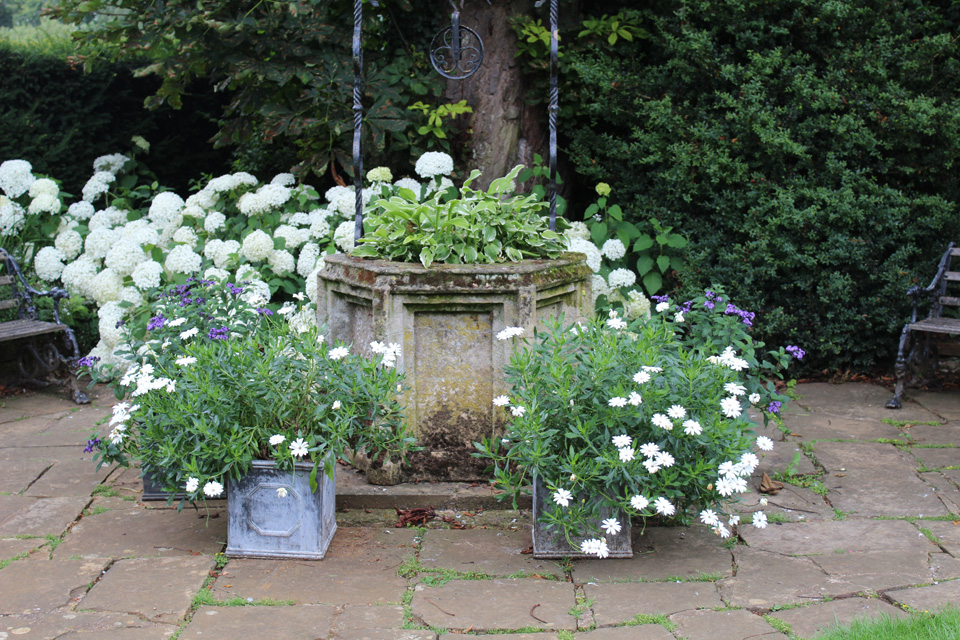
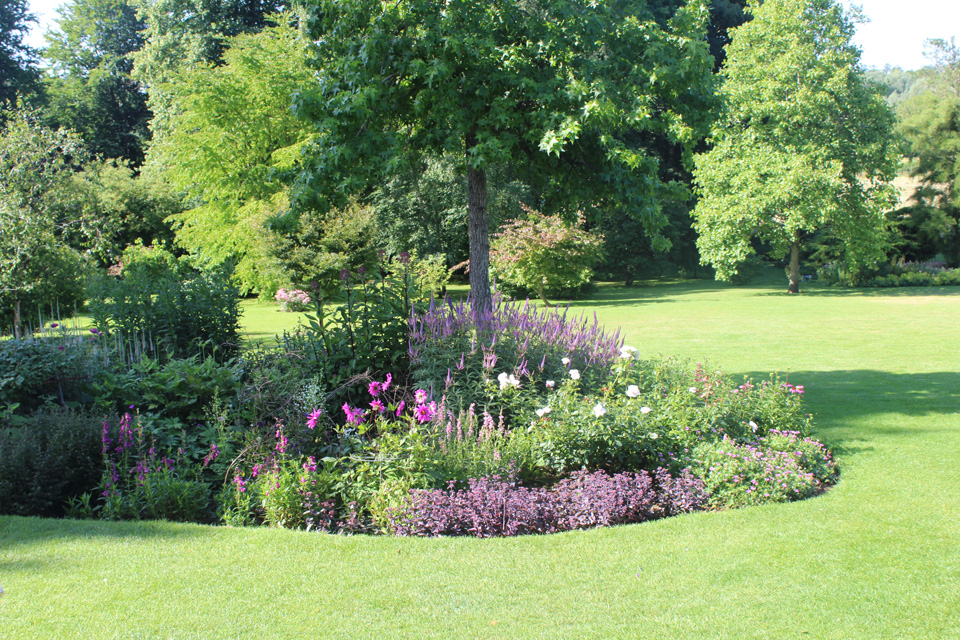
July to August
This is the time when the herbaceous borders are probably reaching their peak. Penstemons, shrubby salvias, monardas, veronicastrums, kniphofias, verbascums, dahlias, sedums, achilleas all contribute to a crescendo of blooms, while some roses continue to flower and campanula lactiflora provides a haze of blue flowers in many areas of the garden. By now the colour schemes in different beds and borders become more apparent. There are areas where blues and yellows predominate; one bed where it is reds, pale yellows and greens; several borders with a palette of purples, pinks, blues and whites and, one or two places where oranges and purples are prominent. But there also remain quieter greener parts of the garden where one can rest ones eyes.
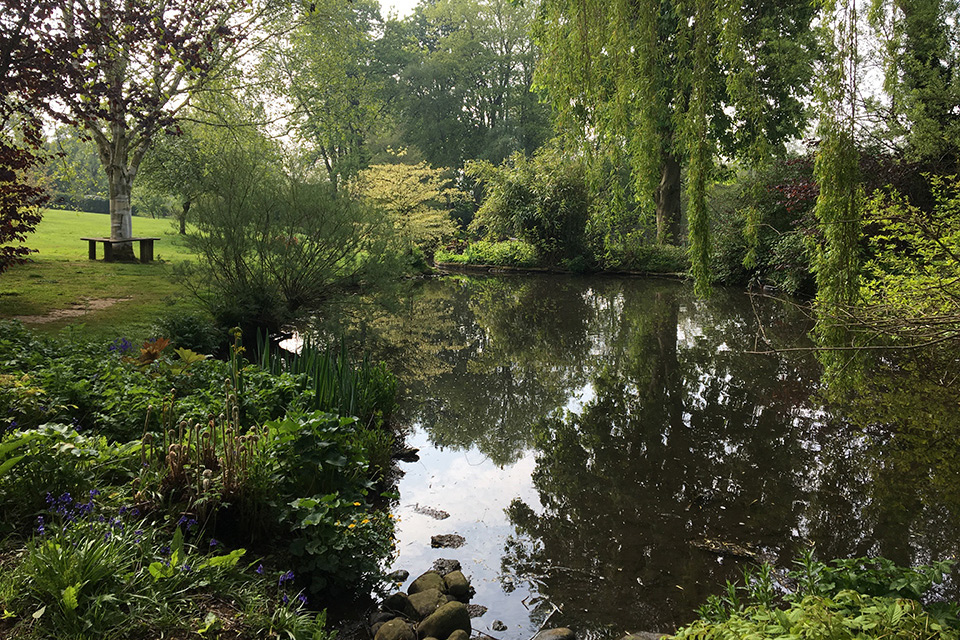
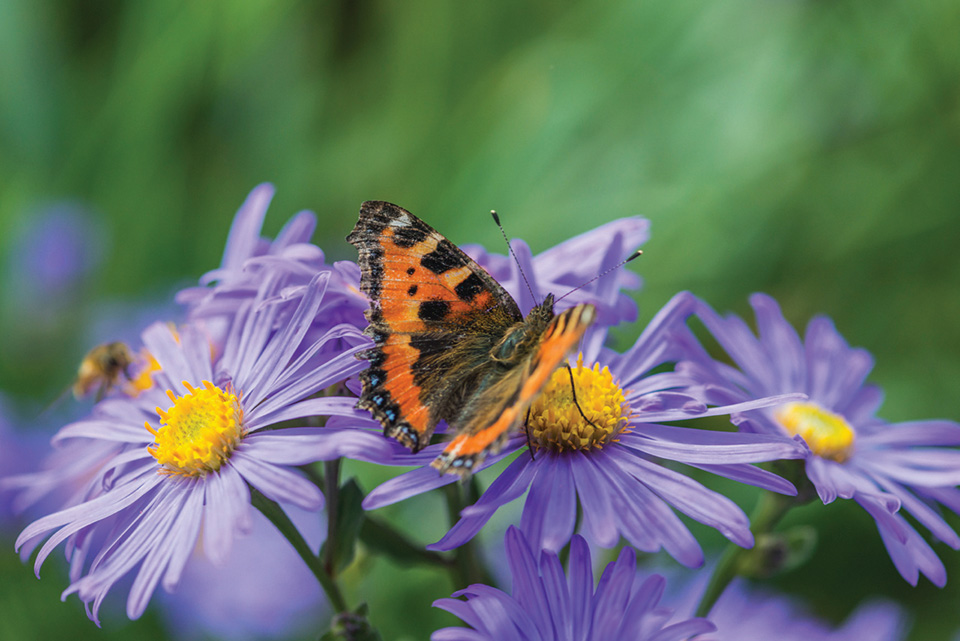
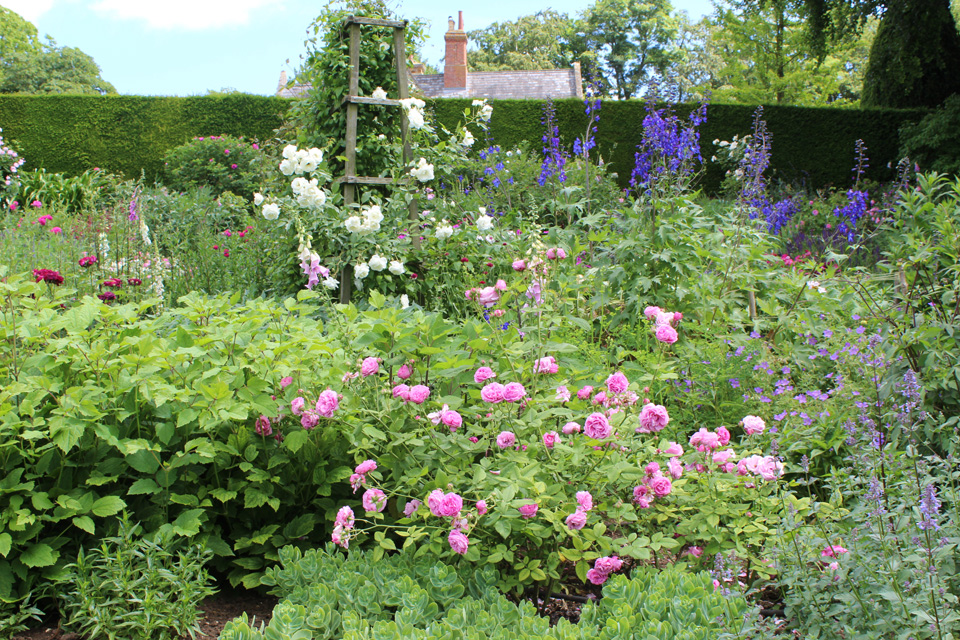
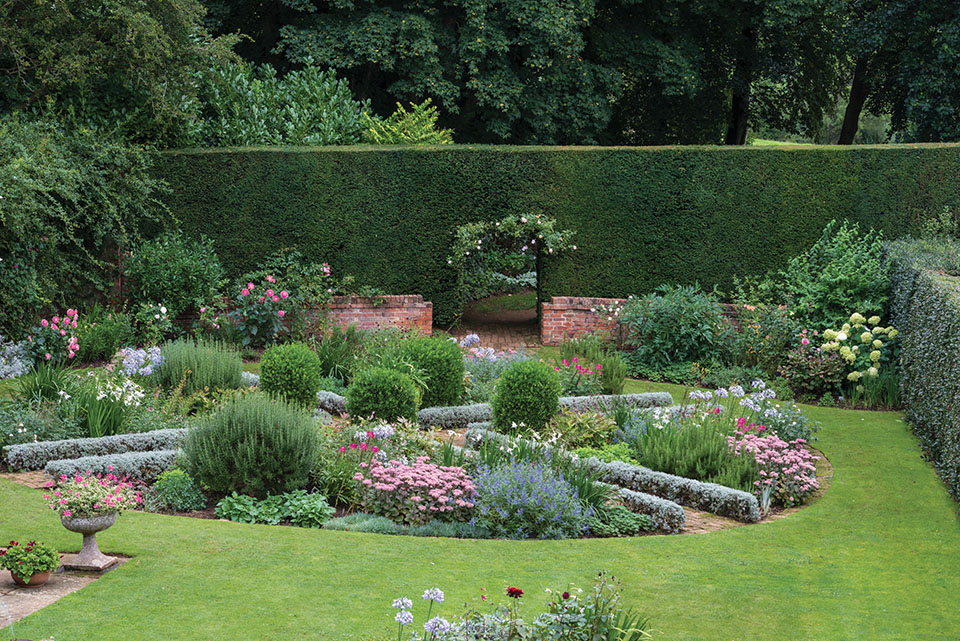
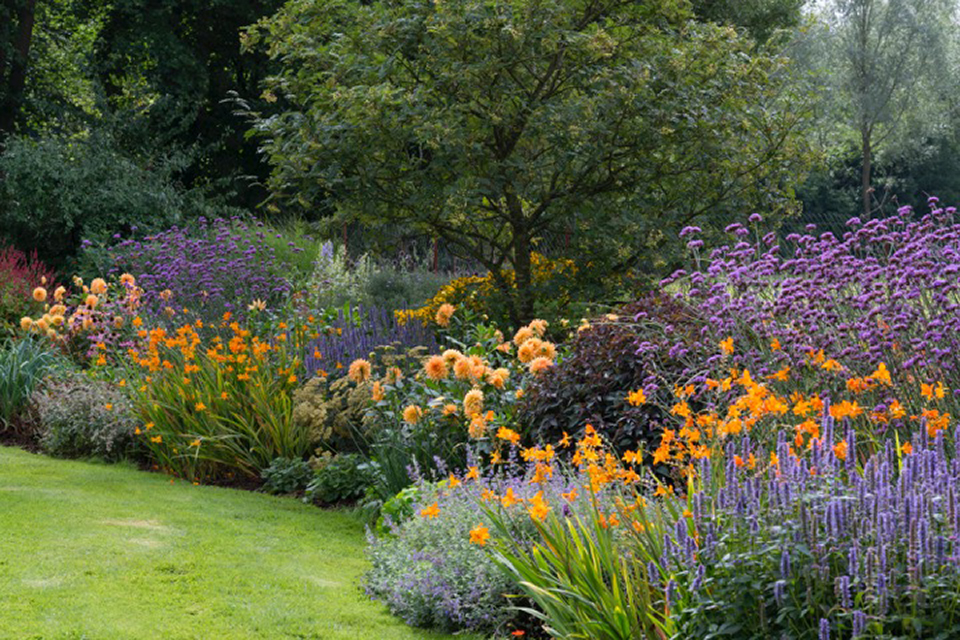
August to September
By the end of August and into September the light changes and becomes softer and arguably this is when we feel the garden at Coton reaches its zenith. There is so much to see, with a new cast of flowers making an appearance at this stage – cimicifugas, asters, late aconitums in pale and dark blue, eupatoriums dark red & white, purple vernonia, schizostylis in shades of red, pink and white, late kniphofias, late agapanthus, sedums, the second flowering of roses and varieties of hydrangeas. The colours become less strident and pale colours more luminescent in this gentler light. It is a lovely moment in the garden.
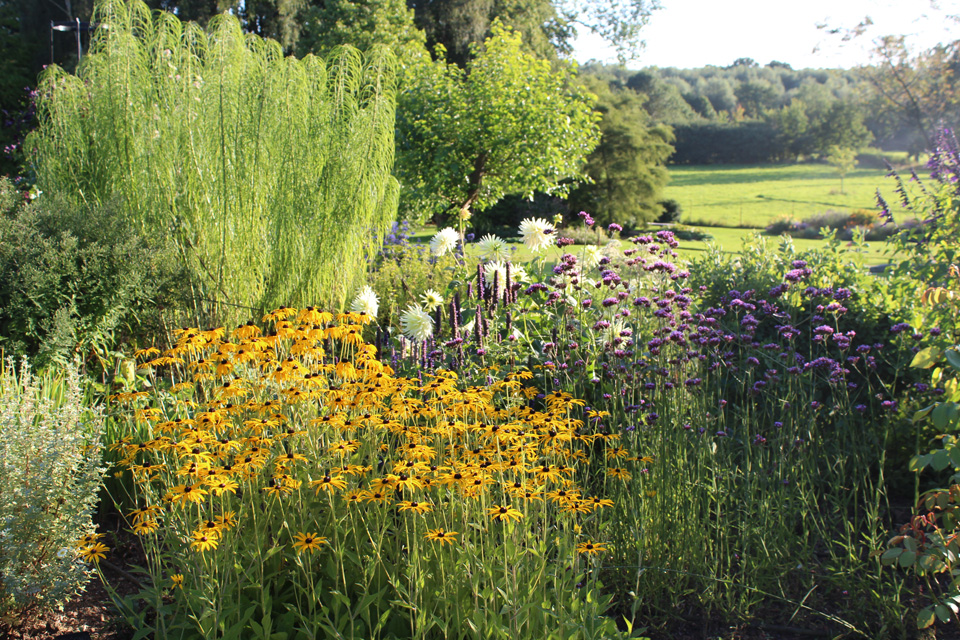
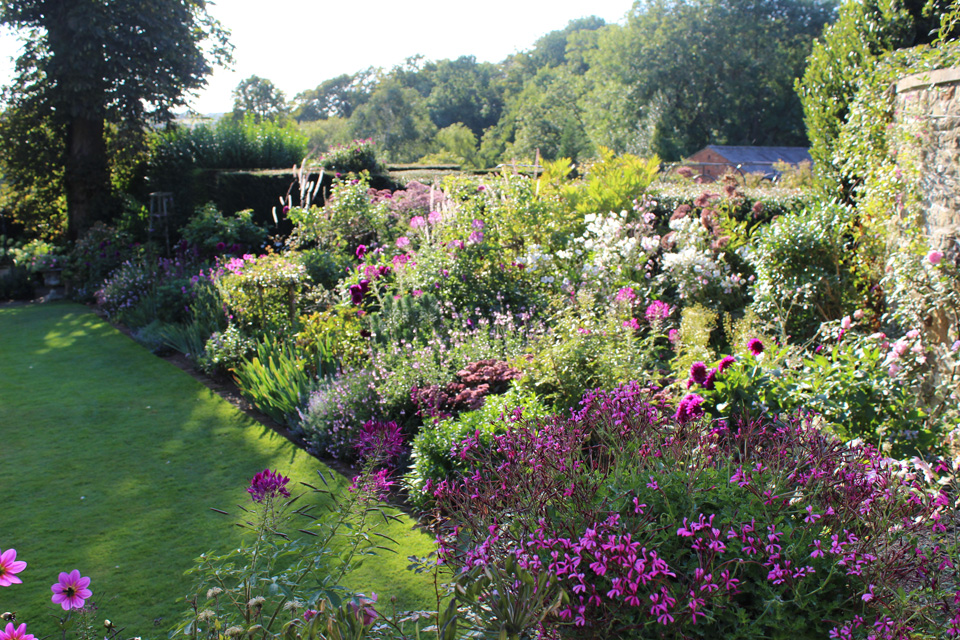
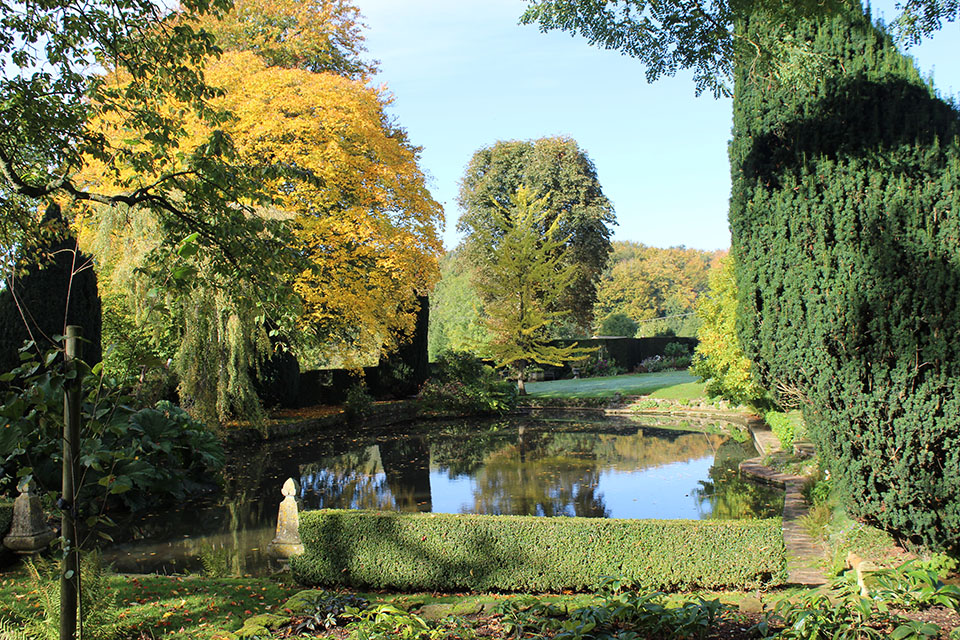
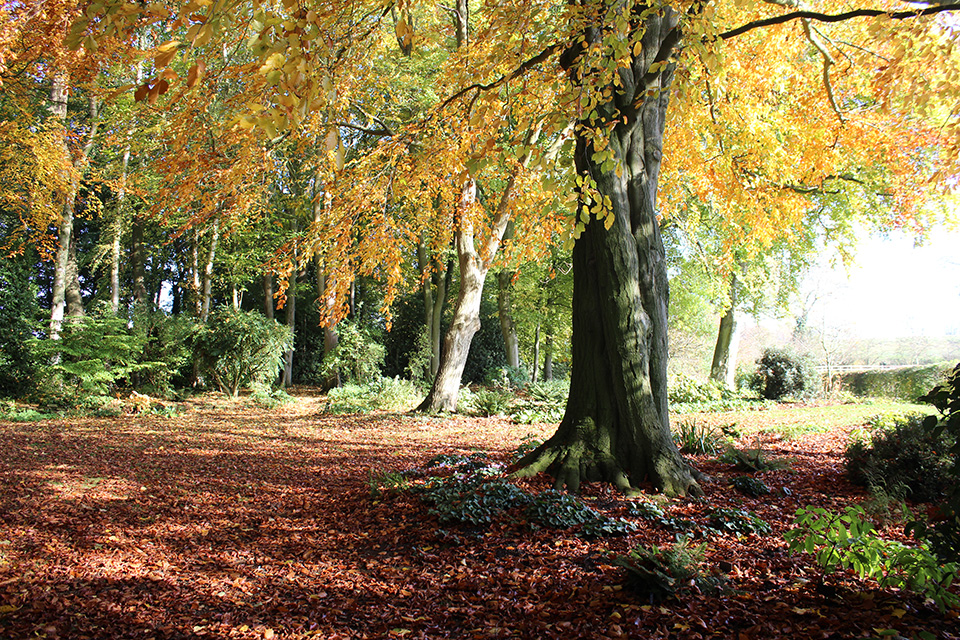
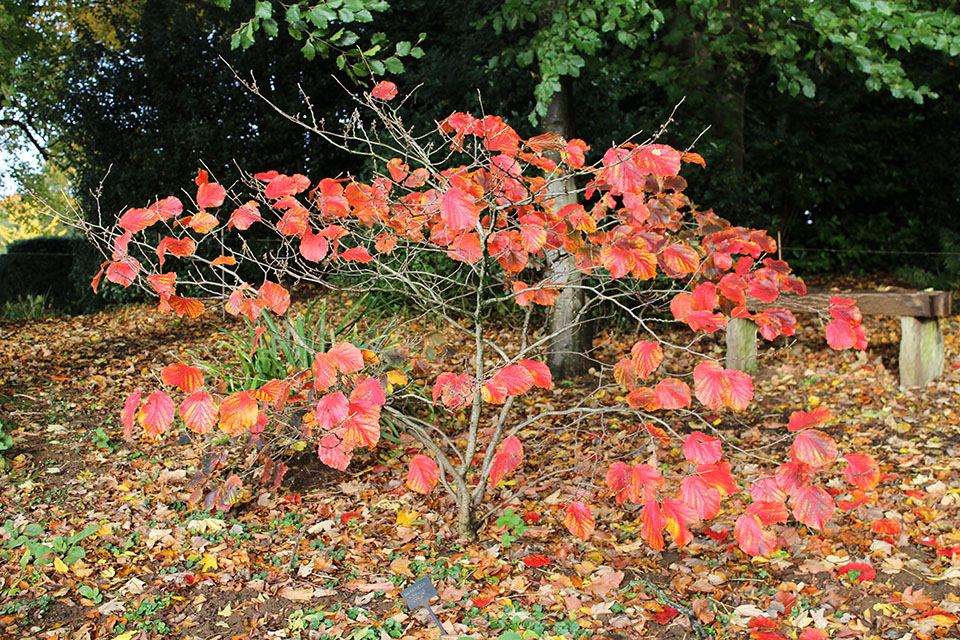
September to October
If the weather is good in late September into October it can be a glorious time in the garden. Salvias and Dahlias continue in full flower, as do the acidantheras, aconitums and asters and some roses. With the cooler nights tree and shrub foliage starts to turn all shades of reds, golds and copper. At ground level there are cyclamen in flower and the deep purple flowers of Crocus speciosus x oxonianum.
Hydrangeas, late buddleias and escallonia have an abundance of flower and late clematis are still performing. It is only when the leaf fall starts to dominate the garden that we feel the summer season is finally coming to an end – and the job of clearing leaves then seems interminable. However, the autumn does provide some wonderful, ephemeral moments of colour lit by the sun now low in the sky and at this point we need to address ourselves to putting the garden to bed and instigating changes for the next season.
November to December
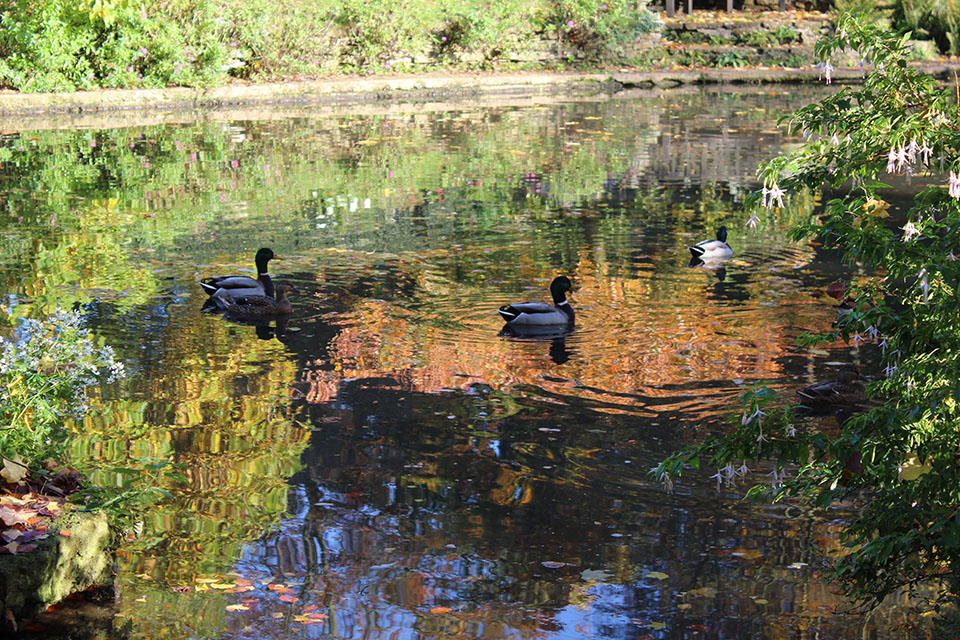
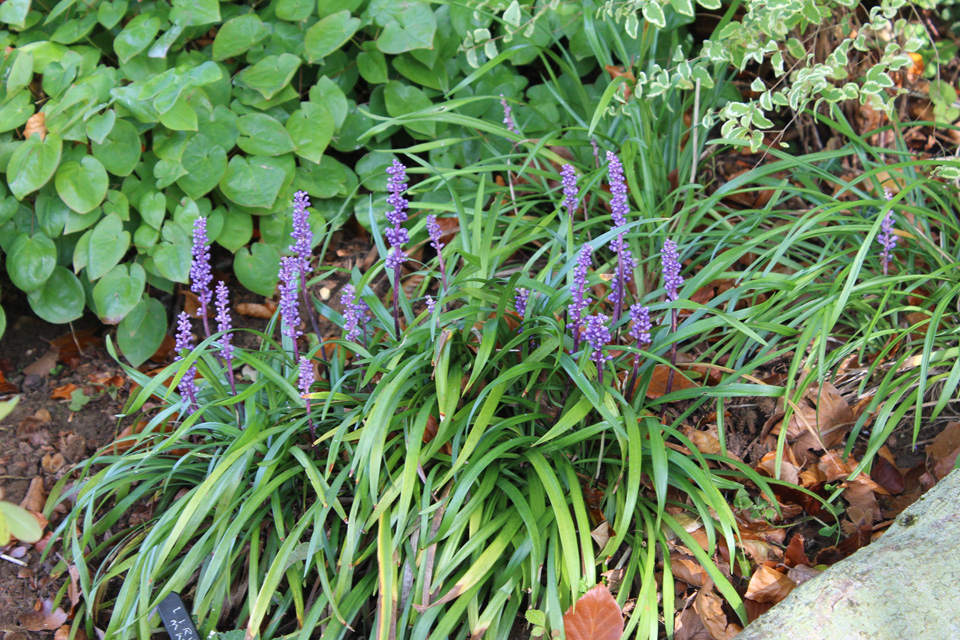
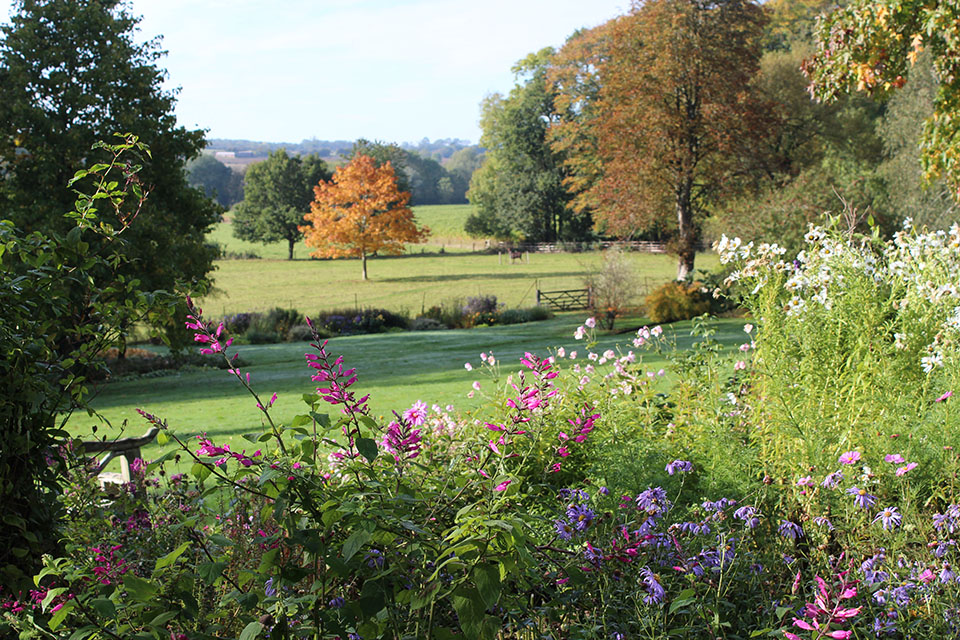
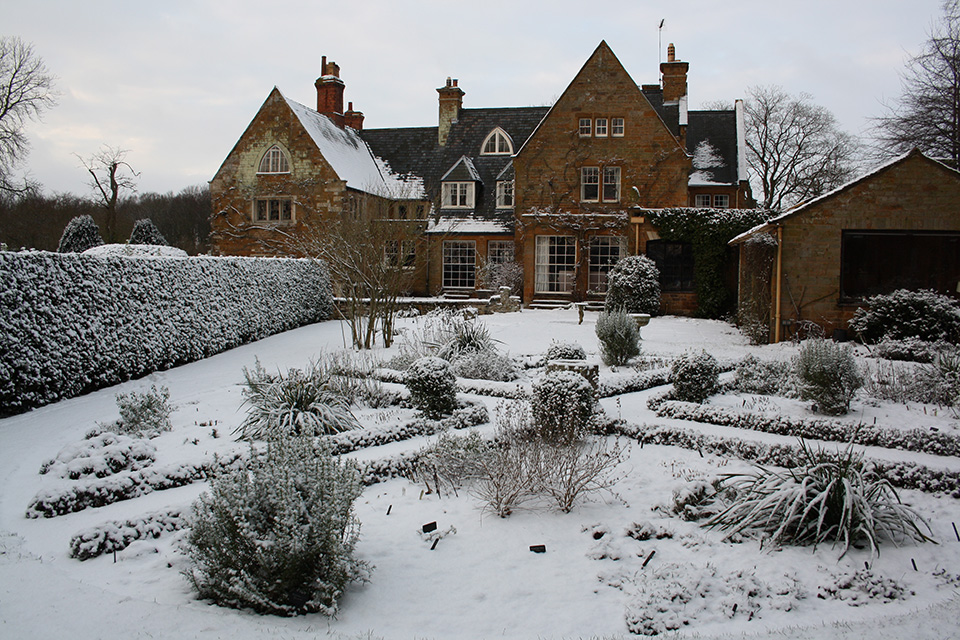
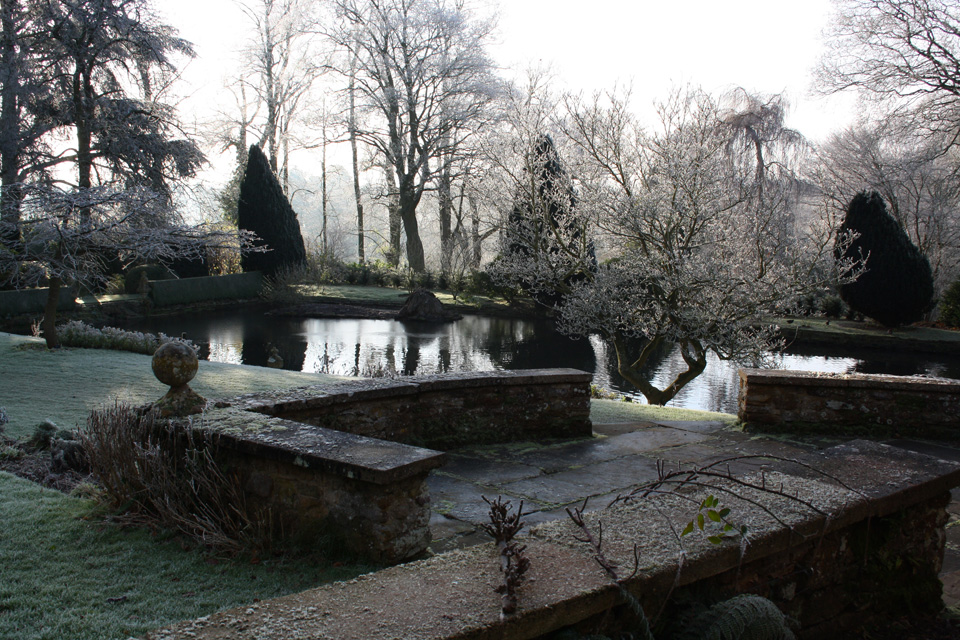
Now the leaves have fallen and we have the endless task of sweeping them up and adding them to our piles of compost. November is the start of tulip planting, so we start working on those borders where we will be planting tulips – cutting back, weeding, reducing groups of plants, which have become too large, introducing new plants and making any changes that we have made notes about during the summer months – and, finally, planting tulips where we have marked spaces for them with bamboo canes.
